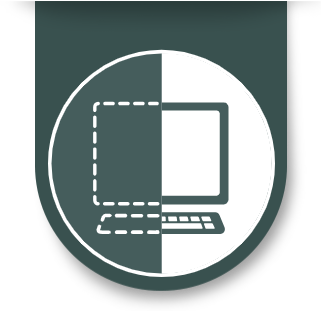Accidentally deleted an important file? Wiped clean your hard drive? Unsure of what to do with corrupted data? Windows File Recovery can help recover your personal data.
For photos, documents, videos and more, Windows File Recovery supports many file types to help ensure that your data is not permanently lost. Recover from a camera or SD card with Signature mode, which expands beyond NTFS recovery and caters to your storage device needs. Let this app be your first choice for helping to find what you need from your hard drive, SSD, USB drive, or memory cards.
While there are many third-party file recovery solutions available to help you recover lost files, Microsoft Windows is also providing a free Windows File Recovery software to help you in dire circumstances.
Windows File Recovery is a command line tool that you may get from the Microsoft Store in case you are unable to find a lost file in your backup. Try using this tool to recover lost data that you can't restore from the Recycle Bin after they've been erased from your local storage device, such as internal disks, external drives, and USB devices.
One of the first suggestions during file recovery is to not use the drive in question as an active device. Minimize or stay away from using your computer if you want to improve the likelihood that a file will recover. In a best possible scenario, disconnect the drive from your computer and attach it externally to recover the files. The space used by a deleted file in the Windows file system is designated as free space, indicating that the file's contents are still present and can be restored. However, files created by any use of your computer have the potential to overwrite this empty space at any point.
Recovery
Download and launch the app from Microsoft Store.
Open a command prompt window in Administrator mode and type winfr
winfr F: G:\SavedFiles /extensive /n *.*
Here:
F: is your source drive from which you want to recover files
G:\SavedFiles is the destination directory where you want to save the files. Note, it is advisable to use another drive to recover the files to, as using the same device to save the recovered files could cause contention.
/n *.* is the wildcard to use to recover all files. You can modify this to select certain filters such as all JPG file (*.jpg).
Modes
Regular mode
- Recover your Documents folder from your C: drive to the recovery folder on an E: drive. Don’t forget the backslash () at the end of the folder.
-
Winfr C: E: /regular /n \Users\suyi\Documents\ - Recover PDF and Word files from your C: drive to the recovery folder on an E: drive.
-
Winfr C: E: /regular /n *.pdf /n *.docx
Extensive mode
- Recover any file with the string "invoice" in the filename by using wildcard characters.
Winfr E: C: /extensive /n *invoice*- Recover jpeg and png photos from your Pictures folder to the recovery folder on an E: drive.
-
Winfr C: E: /extensive /n \Users\suyi\Pictures\*.JPEG /n\Users\suyi\Pictures\*.PNG - The source and destination drives must be different. When recovering from the operating system drive (often C: ), use the /n switches to specify the user files or folder.
Microsoft automatically creates a recovery folder for you called, Recovery_<date and time> on the destination drive.
When you are prompted for confirmation to continue, enter Y to start the recovery operation. Depending on the size of your source drive, this may take a while. To stop the recovery process, press Ctrl + C.
Filesystem
Different filesystems have different recommendations for which mode is to be used. Here are the details given on the Microsoft website - https://aka.ms/winfrhelp for which can help you decide which file system you have and which mode to use.
| File system | Examples |
|---|---|
| FAT and exFAT | SD cards, flash or USB drives (< 4GB) |
| NTFS | Computers (HDD, SSD), external hard drives, flash or USB drives (> 4GB) |
Depending on the operating system or storage device, Windows supports a number of different file systems. Only comprehensive mode supports file recovery from non-NTFS file systems. In File Explorer, right-click a drive and choose Properties to check which file system you have.
Mode Selection
Use the following table to help you decide which mode to use. If you are not sure, start with Regular mode.
| File system | Circumstances | Recommended mode |
|---|---|---|
| NTFS | Deleted recently | Regular |
| NTFS | Deleted a while ago | Extensive |
| NTFS | After formatting a disk | Extensive |
| NTFS | A corrupted disk | Extensive |
| FAT and exFAT | Any | Extensive |
Command Line Syntax
C:\Users\suyas>winfr /?
Windows File Recovery
Copyright (c) Microsoft Corporation. All rights reserved
Version: 0.1.20151.0
----------------------------------------------------------
USAGE: winfr source-drive: destination-folder [/mode] [/switches]
Modes
/regular - Regular (Standard recovery option for non-corrupted NTFS drives)
/extensive - Extensive (Thorough recovery option suitable for all file systems)
Switches
/n <filter> - Filter search (wildcards allowed, trailing \ for folder)
/? - Help text
/! - Display advanced features
Example usage - winfr C: D:\RecoveryDestination /regular /n Users\<username>\Downloads\
winfr C: D:\RecoveryDestination /regular /n "Users\<username>\My pictures\"
winfr C: D:\RecoveryDestination /extensive /n *.pdf /n *.jpg
Visit https://aka.ms/winfrhelp for user guide
For support, please email winfr@microsoft.com



Top comments (0)